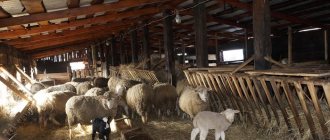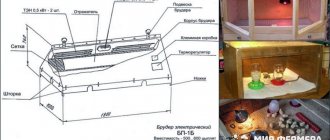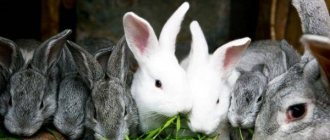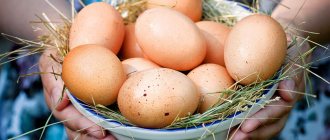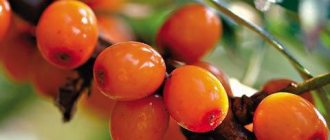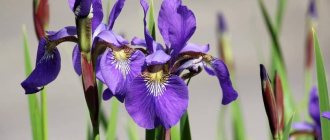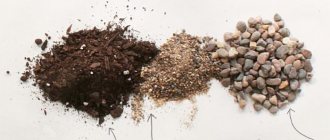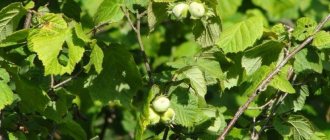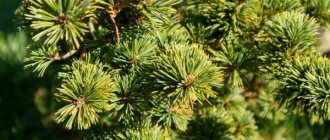What are the children of sheep and rams called?
First, you need to decide what to call adult sheep. If a female has never been covered by a male, she is called “bright”. Having crossed this stage of life, she becomes an adult of childbearing age, a sheep. The male is a ram.
Reference. Animals mate for the first time when their weight is 80% of that of an adult. After dating, the ewe becomes pregnant, which lasts 5 months, then the female becomes a pregnant ewe.
A baby sheep is called a lamb, regardless of gender. This word comes from the Latin "agnus" or lamb. This pronunciation is now used in a religious sense. The ancient Jews regularly sacrificed a lamb to God, which symbolized purity and purity. Farmers almost never use this word.
Origin of names
They call a baby sheep and ram that for a reason. The appearance of the name of the animal in Rus' dates back to the 10th century. It is a derivative of the ancient Slavic “aries” and means “ram”.
In ancient Rome, these animals were called "agnus" in Latin. The child of a ram had religious significance and was called a “lamb.” This is where the terms “lamb - child of God” and “sacrificial lamb” came from. The word "lamb" has the root "yagn" and a suffix that together mean "little sheep."
Animals were often used as sacrifices and symbolized the birth of hope and complacency. With the adoption of Christianity in Rus', the baby sheep and ram eventually ceased to be used as a sacrifice. The term “lamb” was used less and less in everyday life. In religion, it has been preserved, but does not have such practical significance as before. In fairy tales, the little sheep is a symbol of goodness, innocence, and meekness.
Sheep are artiodactyl mammals, representatives of the bovid family.
Today, the young of these curly-haired domestic animals are no longer called lambs. They are called lambs.
There are several options for the correct name for a little sheep. People come up with different terms. But you need to know that the correct names of all members of the family depend on the age of the animal.
A lamb is a baby lamb under one year of age. He is still quite weak and defenseless, so he requires special care. A young sheep is bright. Already at the age of one and a half years, Yarka turns from a female lamb into a real mother.
What's so special about little lambs?
The small sheep looks very similar to a baby goat. Young lambs can be distinguished by the shape of their ears and coat: in lambs it is thicker. They have a pretty appearance. Little lambs are often kept in petting zoos because children love to interact with them.
The small sheep looks very similar to a baby goat
Lamb is eaten. The meat of young sheep is healthy and nutritious. It contains amino acids, minerals and vitamins, and there is almost no cholesterol. The product is recommended to be included in the diet of sick people and young children. The meat has a pleasant taste and is widely used in cooking. It is suitable for preparing pilaf, goulash, cutlets, and cooking soups.
Baby sheep and ram
In order to avoid mistakes in naming the baby, you need to figure out what the parents are called:
The resulting offspring after mating should be called lambs, since gender division in this case is not a fundamental factor. The name for the babies can be chosen based on their external features, so farmers can call them sheep, lambs and even kids because of their external resemblance to the offspring of goats. It is believed that the name comes from the Latin word "agnus". Translated, it means “lamb.”
Sheep, ram and lamb
Note! Females capable of reproduction, which can continue the race, have their own scientific name. A young sheep that has not reached puberty is called “bright”, which is why this designation can be heard from professional farmers who take into account zoological terms when handling animals. A small sheep that is not capable of procreation and is not covered with wool continues to be called a lamb.
Selection
If the farm has expensive breeds of animals, then for breeding it is necessary to select the best specimens. Of course, they choose among the young animals.
To the tribe
Young individuals undergo the first inspection 10-15 days after birth. Those lambs that are in good health, strong in build and heavy in weight are taken for breeding. After the last feeding with mother's milk, another selection is carried out. They are then re-examined at 1 and 2 years of age.
For meat
Cull lambs are selected for meat. As a rule, rams are slaughtered when they reach 8-9 months. It is believed that at this age lamb is the juiciest.
What does the baby look like?
The lamb, the child of a sheep and a ram, is a cute and charming animal that attracts the attention of everyone who sees it. Young offspring usually weigh about 3-4 kg.
Main differences and features:
- lack of hair or a small amount of it;
- mobility;
- activity;
- curiosity.
Babies do not have horns in the usual sense. Due to the fact that they naturally do not see well enough, in most cases lambs are found in groups of several animals. After giving birth, an adult sheep needs to be in a warm room for the first 3-4 hours so that it has access to a sufficient amount of water.
Features of keeping lambs
The baby ram and ewe must be kept with some special features. In the process of sheep breeding, indicators such as maintenance and fattening must be taken into account. It is better for young animals to be in a warm room, especially during the cold season.
Optimal materials for the pen:
The area is calculated according to the principle: 1 animal = 3 m². Also, a person who has chosen sheep breeding for himself must make the sheepfolds protected from drafts and wind. The main temperature indicators are 15-18 degrees.
Important! Sheep at any age do not like humidity, so it is necessary to make the pen so that it is protected from water as much as possible.
The floor should be made of wood; additional hay is recommended for lambs. For food you need to make a special nursery. The size is calculated as follows: 35 cm of space per lamb.
A feeding feature that must be taken into account for both lambs and adult animals is that the daily feed rate is divided into 3 parts:
- in the morning you need to give roughage and succulent food;
- During the day, older lambs and adult animals should receive feed concentrates;
- in the evening hay and straw are given.
On a note. Substances such as salt and chalk must be available to the animal at all times; there are no restrictions on quantity. Shavings, sawdust and straw should be on the floor at all times as bedding. It is advisable to have electricity in the pen so that if necessary, turn on the emergency lights.
In winter, young and adult sheep need to be released into a specially equipped courtyard. There should be a feeder and drinking bowl inside. In the warm season, you need to include fresh grass in your diet: for adult animals - 6-7 kg, for babies you need to give 2-3 kg.
A growing child of a sheep and ram should receive mineral feed, hay obtained from alfalfa, clover. A good nutritional element is pea, oat and barley straw. It is recommended to further grind it and mix it with feed. In the future, lambs that no longer feed on milk, but have switched to regular feed, need to include zucchini, silage, peas and bran in their diet.
There are also feeding standards that need to be taken into account. At first, lambs only need milk, but in the future they will need to add feed, hay, vegetables and fresh grass to the diet in season. In the summer, growing children should receive green food, as it contains the necessary amount of vitamins; for sheep it has additional benefits - it has a positive effect on reproduction processes in the future. If the pasture meets the needs in full, then additional supplementary feeding will not be required; if the quantity is insufficient, 200 g of concentrates are added to the diet for young animals and 400 g for adult animals.
Choice of parents for reproduction
Only on the condition that both the female and the male meet all quality indicators will good, strong offspring be obtained.
The ram should be strong and robust, with a normal degree of fatness. The quality of seed material directly depends on the quality of care and maintenance of the animal.
During the period of intense mating, the ram should eat a balanced diet. The diet must include vitamins and minerals. Components such as phosphorus, potassium, vitamin A and E are especially important. Rams should only be allowed near females during the day. They spend the night in different rooms, this is necessary to replenish their strength.
The herd must be formed in such a way that there are 10-15 sheep per ram. If the male is in excellent shape and eats well, then up to 20 sheep can be assigned to him. It is recommended to have at least two males so that there is an equivalent replacement in case one of them gets sick.
As a rule, the heat season for sheep is late summer or mid-winter. This is influenced by the climatic features of the region of residence. Romanov sheep are unique in this regard: they can be covered at any time of the year. Most often, matings are carried out in August-October.
When there is a need to artificially intensify the onset of hunting, sheep are kept locked up in dark rooms. This is done for 2-3 weeks, several hours a day. It is important to correctly determine the onset of hunting. Otherwise nothing will happen. Repeated mating can begin in 16-20 days, when a new hunt begins.
How to help a female during childbirth?
An experienced farmer must know the lambing date, which is calculated based on the time of mating. Of course, labor can begin several days earlier or later, for many reasons, so a pregnant sheep should be constantly monitored. About 48 hours before lambing, her udder noticeably swells, her stomach drops down, and her genitals become enlarged.
Before giving birth, the female's udder swells noticeably
As the birth process approaches, the behavior of the sheep also changes - it becomes irritable, can rake the bedding, and lies on its side. Most often, healthy animals do not require additional assistance and cope with childbirth on their own. However, it is recommended to monitor the process, especially if it is a primiparous female.
Farmer's help is required in the following situations:
- The amniotic sac usually ruptures during lambing, but if this does not happen, then it should be ruptured independently. After all, if you miss time, the baby will suffocate.
- After the lamb is born, the female usually bites its umbilical cord. If it does not show active actions, then you can cut it yourself with sterile scissors. It is cut off at a distance of 8 centimeters from the stomach, and then treated with iodine.
- The female must lick her young. If this does not happen, then you need to wipe the lamb with a clean cotton cloth, paying special attention to the eyes, mouth and nasal cavity. The amniotic sac should be discarded.
- Some lambs are born strangled, so you can try to resuscitate them - breathe air into the baby's mouth.
- A few minutes after birth, the lamb should be on its feet. At the same time, he needs help finding the udder and nipple. It is recommended to express the first drops of colostrum because they are too fatty.
If the baby rests his feet, you should help him be born
If labor is weak, the sheep may need the help of a veterinarian who will give a stimulating injection. At the end of the birth, the female should produce an afterbirth, which should not be left in the pen - the sheep should not eat it.
Note! After giving birth, the female experiences extreme thirst, so she is given warm water every two hours, but they begin to feed her later - every other day.
Video - How to help a sheep during childbirth?
Rules for caring for them
A newborn lamb may be born weak. Some individuals may not even show signs of life. Therefore, the farmer should carry out several procedures to make the pet come to life:
- The muzzle is cleaned.
- Artificial respiration is performed (the paws are pressed to the newborn’s chest, air is blown into the mouth).
- The head of the lamb is supported and needs to be helped to take its first sips.
The umbilical cord usually breaks on its own. But in rare cases, the farmer still has to trim it himself. After the manipulation, treatment with iodine should follow. In order for the baby to be strong, in the first days of life he should be given artificial heating with ultraviolet lamps. This will increase the hemoglobin level and the number of deposits of phosphorus-calcium salts.
